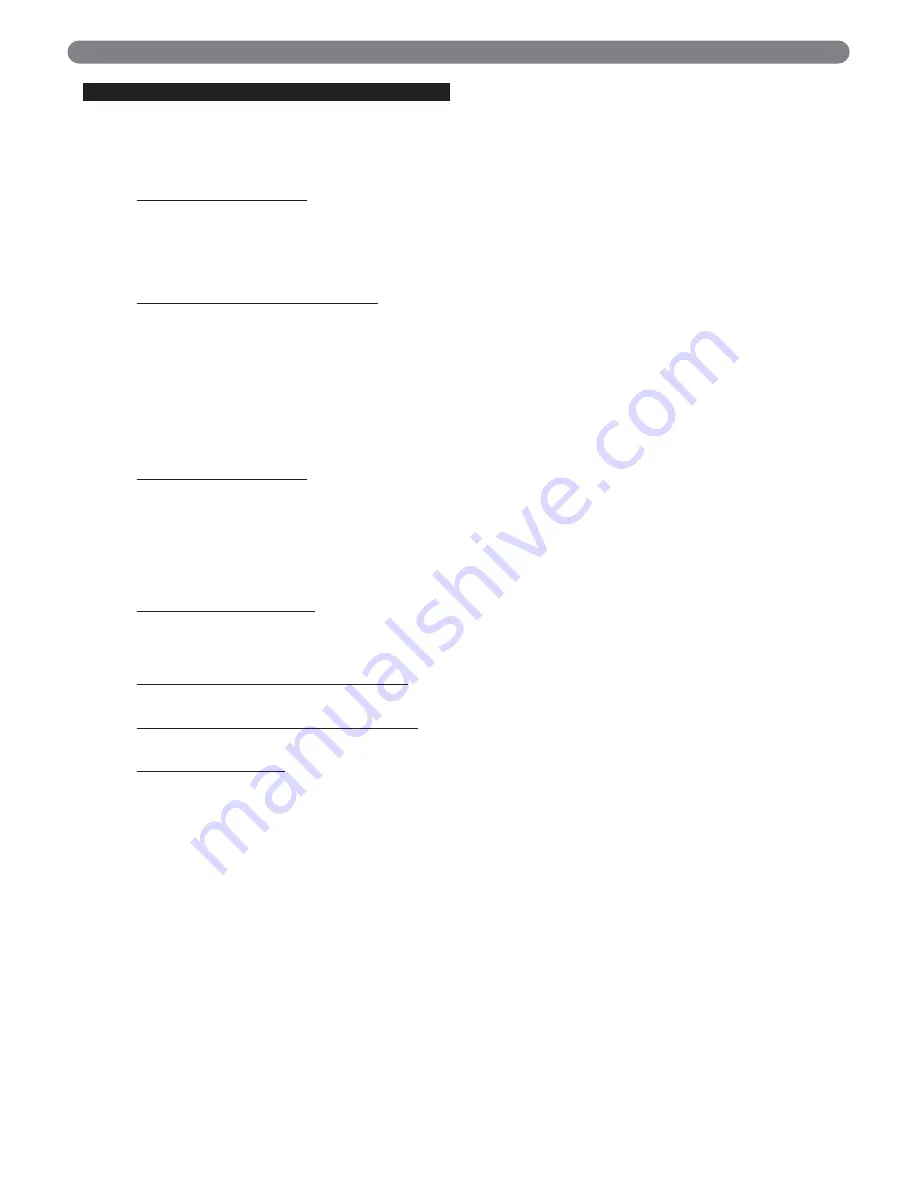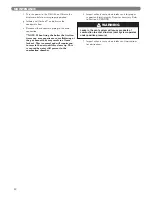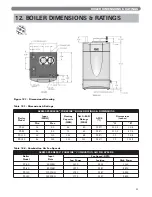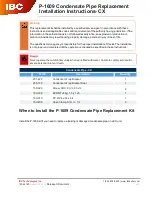
36
D. CENTRAL HEATING
1.
Heating Modes:
Table 8.1 provides an overview of the central heating
(CH) modes. The following are detailed descriptions
of the operation of these modes:
Mode 0 – Indoor Thermostat: This is the default mode
for the control. When this mode is selected, the
control starts the boiler in response to a demand from
the indoor thermostat. The boiler will target the User
selected setpoint each time there is a heat demand. In
this case, the outdoor thermostat is not required.
Mode 1 – Thermostat and Outdoor Reset: In this
mode, the control uses the outdoor temperature to
calculate a target for the boiler setpoint.
The installer selects design temperatures and mild
weather temperatures on the installer menu. The
control then calculates a target supply temperature
based on the current outdoor temperature.
A detailed explanation of Outdoor Reset is provided
in section 8.D.3.
Mode 2 – Full Outdoor Reset: In this mode, the boiler
control operates independently of any room
thermostats. The boiler is held at a target supply
temperature calculated using the current outdoor
temperature.
A detailed explanation of Outdoor Reset is provided
in Section 8.D.3.
Mode 3 – Permanent Demand: Mode 3 is similar to
Mode 2 except that the boiler target is a constant user
defined setpoint. Again, the boiler control operates
independently of room thermostats.
Mode 4 – 0 – 10 V Input to Modulate Setpoint:
This feature is not currently available.
Mode 5 – 0 – 10 V Input to Modulate Firing Rate:
This feature is not currently available.
Mode 6 – Hydro-Air Unit: This mode is specifically for
boilers supplying hot water to a hot water coil in a
forced air heating system using a User defined boiler
target setpoint temperature.
This mode is nearly identical to Mode 1 except that
the response parameters are adjusted differently. The
boiler control targets the setpoint temperature and
modulates based on this temperature.
2.
Setpoint operation
When operating in CH mode 0, 3 or 6 the user can
select a target temperature for the boiler supply. The
control modulates the boiler based on three conditions:
1) The difference between the current supply
temperature and the target; 2) The speed with which
the supply temperature increases; and 3) The speed at
which the system reacts to the temperature increase.
When the boiler supply temperature approaches the
target setpoint, the burner will modulate down to
decrease the input. If the temperature begins to
decrease, the control will increase the input rate.
3.
Outdoor Reset Operation
To maximize fuel savings,
P
URE
F
IRE
boilers are factory
equipped for outdoor reset operation. The following
describes the operating principal of this feature.
Operating Principle:
• Heat Loss decreases as Outdoor Temperatures
increases.
• Heat distribution system is sized for Design
Conditions (Coldest Outdoor Temperature).
• Boilers operate more efficiently at lower water
temperatures.
• Condensing boilers have no minimum return
water temperature.
The integrated control system on the
P
URE
F
IRE
boiler
adjusts the boiler supply setpoint based on outdoor
temperature. In the installer menu, under “CH
Settings” there are two parameters that define the
design point of the boiler. The design point represents
the conditions for which the boiler was sized.
Boiler Design Temperature:
The boiler supply
temperature required to heat the building under its
design load is called Boiler Design Temperature. For
example, if the building was designed with copper
finned tube baseboard with 180°F water, this is the
design temperature that should be entered. The
factory default for the Boiler Design Temperature is
180°F (82°C).
Outdoor Design Temperature:
The outdoor design
temperature is the outdoor temperature used to
calculate the heat loss of the building to determine the
maximum heat load.
Commonly used values for this can be found in Table
8.7 for many North American Cities. The factory
default for this setting is 0°F (-18 °C).
Mild Weather Boiler Temperature:
This is the
temperature required to heat the building under a
minimum load. Table 8.8 shows recommended values
for this temperature setting.
The default for this is 70°F (21°C). However,
depending on the type of heat distribution used, this
value should be increased.
For example, if the boiler targets 70°F when a kick
space heater or unit heater is used, the heating unit is
likely to supply cold air if there is no thermostat to
prevent it from running.
Mild Weather Outdoor Temperature:
This is the
outdoor temperature at which the boiler should
operate at its minimum heat load. The default value
for this is 70°F (21°C).
Example:
Figure 8.8 shows how the Design Point and the
Mild Weather Point define a line used to calculate
boiler supply temperature based on outdoor
temperature.
BOILER CONTROL: INTERNAL WIRING & OPERATION
Содержание PF-110
Страница 18: ...16 WATER PIPING AND CONTROLS Figure 4 6 Two Boilers Primary Secondary with Four Zones Zone Circulator ...
Страница 19: ...17 WATER PIPING AND CONTROLS Figure 4 7 Three Boilers Primary Secondary with Five Zones Zone Circulator ...
Страница 20: ...18 WATER PIPING AND CONTROLS Figure 4 8 Three Boilers Primary Secondary with Four Zones Zone Valves ...
Страница 30: ...28 ELECTRICAL CONNECTIONS Figure 7 4 Internal Wiring Schematic ...
Страница 56: ...54 REPAIR PARTS ...
Страница 58: ...56 REPAIR PARTS ...
Страница 60: ...58 APPENDIX A STATUS SCREENS APPENDIX A STATUS SCREENS ...
Страница 61: ...59 APPENDIX A STATUS SCREENS ...
Страница 62: ...60 APPENDIX A STATUS SCREENS ...
Страница 63: ...61 APPENDIX B USER MENU APPENDIX B USER MENU ...
Страница 64: ...62 APPENDIX C INSTALLER MENU APPENDIX C INSTALLER MENU ...
Страница 65: ...63 APPENDIX C INSTALLER MENU ...
Страница 66: ...64 APPENDIX C INSTALLER MENU ...
Страница 68: ...66 NOTES ...
Страница 69: ...67 NOTES ...
















































